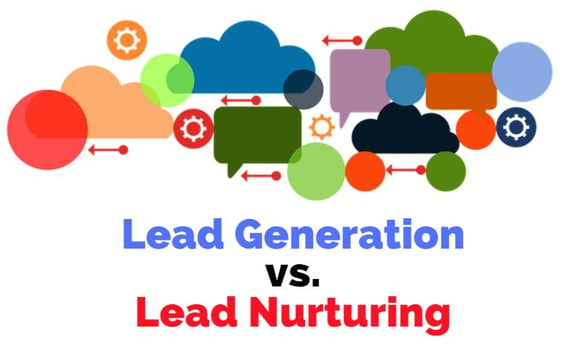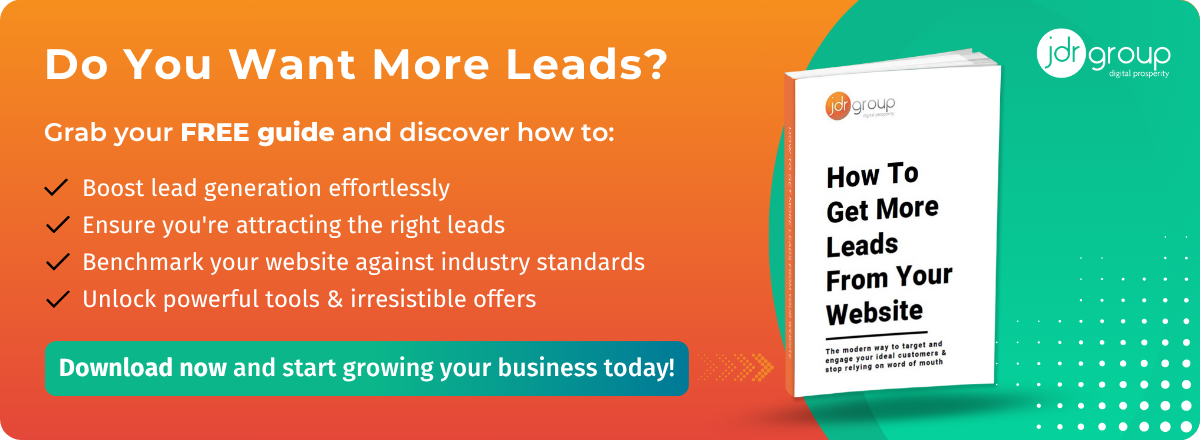Lead Generation Vs Lead Nurturing - Which Is More Important?

Two terms constantly thrown around when talking about marketing and business growth are 'lead generation' and 'lead nurturing'. Many people make the mistake of thinking the two terms are interchangeable - which isn't exactly true...

Lead Generation Vs. Lead Nurturing: What's The Difference?
So, let's clear this up! Here's a quick simple definition for each term:
Lead Generation - Refers to any online marketing process (such as Social Media, Content Marketing, Website Design, Emails, SEO and Pay-Per-Click) used to engage and attract potential customers. Lead generation focuses on finding new leads.
Lead Nurturing - Is the process of actually building strong relationships with individual customers with the intent of turning them into a loyal, paying customers. Lead nurturing therefore focuses more on qualified leads - a person who has already shown an interest in your business.
As you can see, both terms are relatively similar; however lead generation is the first rung on the ladder, whereas lead nurturing is further down the line. The goal of lead generation is to cast your net far and wide with the hope of finding people who are genuinely interested in your business. On the other hand, lead nurturing (like the title suggests) is where you attempt to guide and coax someone through the buying process.
Benefits & Disadvantages
Lead generation and lead nurturing is a vital aspect of any inbound marketing strategy. In fact, without a lead generation strategy your business won't be able to compete in today's fierce market. Take a look at the benefits and disadvantages below.
Benefits
The process of lead generation and lead nurturing is the perfect opportunity to create and share interesting online content! Smart businesses will offer their customers some form of valuable, juicy content to gain their affection and trust. Types of content could be blogs, social media posts, offers or other online resources like an eBook or checklist template.Furthermore, creating content for the purpose of lead generation is a superb way to improve your business' Google ranking. The more high quality, fully optimised links you have on the internet the greater the possibility of your website being flagged in the search results for certain keywords.
Finally, lead generation followed by lead nurturing is one of the best methods of actually promoting your business in order to achieve more sales. Sharing your content online with interested people, and then following up those leads, should in theory boost your annual sales. Plus, if your new customers like your services they will stay with you and hopefully promote your brand to their friends and family.
Disadvantages
Lead generation and lead nurturing isn't an overnight process - in some cases it can take months to convert a stranger into a qualified lead, and then into a paying customer. In this way lead generation can be very time consuming, especially if you're targeting a very niche audience. Nevertheless, when done correctly the advantages of securing a new lead and guiding them through the buying process will far outweigh the downside of waiting. Always remember that patience is a virtue!
It's also worth mentioning that lead generation and nurturing can be expensive, especially when the results of the campaign aren't what you hoped for. Some businesses spend an awful lot of money on lead generation with the hope that it will attract a large number of potential customers. However, what happens if your lead generation methods aren't as effective as your rivals? What happens if you spend a decent amount of time following up a certain lead only for that person to go elsewhere, or say they are no longer interested?
For this reason, it's exceptionally important that businesses pay attention to their key performance indicators (KPIs) to help them determine if a certain tactic is working or not. KPIs include how many people have you reached in a certain timescale? Are those people genuinely interested in what you have to offer? How many of those leads were you able to contact? After contacting them, were they still interested in what you have to offer? You can use this information to determine if your lead generation and nurturing was worth your business' time, effort and money.
Final Thoughts
Overall, lead generation and lead nurturing go hand in hand. You could argue that lead nurturing carries more weight because this is the time where you actually focus on the customers that have genuine potential, instead of trying to contact someone who isn't really interested.
For further information on lead generation please visit these other blogs:
The JDR Group specialises in inbound marketing services. Please get in touch with our team for a free review of your current strategy and for helpful advice on how we can boost your business' ROI through lead generation tactics!


